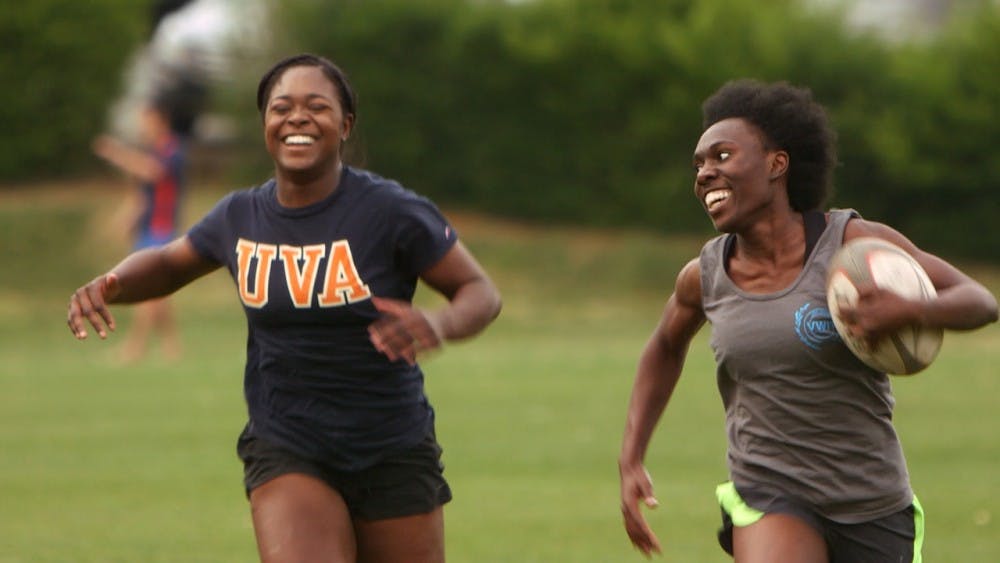Following the 2015 Women’s World Cup when Team USA brought a FIFA victory home, Mary Pilon wrote a riveting piece for Politico on the gender pay gap in many professional sports — a disparity that reached new heights in the soccer sphere in 2015.
At the heart of the argument was the discussion of worth — which teams were more financially valuable? The revenue the team brings in has much to do with the salaries they are able to pay the players.
The teams that bring in the most revenue are those that are most followed, most attended and most financially supported by fans through merchandise sales, concession purchases, etc. In almost every sports scenario, U.S. soccer aside, men’s sports take the cake in all these areas. Higher attendance and attention on male sports creates a greater perceived value.
The same perception persists at Virginia. Men’s basketball, soccer and baseball — these are all sports that dominate media coverage and bring attention to the University. As we enter the winter season, Virginia’s men’s basketball team is already beginning to steal the spotlight from Mendenhall’s football team. Basketball brings interest and ticket sales, baseball and men’s soccer bring national titles and the financial benefits of a blooming program — all while women’s sports go largely ignored.
But here’s the thing: at colleges especially, the value of athletics extends far beyond the profit a team can produce.
One of the most valuable Cavalier team’s is not, in my opinion, a men’s team. In fact, it is not even a varsity team. Undervalued and overlooked, it is the Cavalier women’s rugby team — a Division I collegiate club team and current national runners-up.
Consistently ranked as one of the top five teams in the country, Virginia women’s rugby is a top team despite the fact that most of their players are new to the game.
They don’t make cuts; they take every player who comes to tryout. They don’t have fancy facilities; they practice on Mad Bowl amid the chaos of Rugby Road. And they receive limited University funding — they pay their own way and fundraise the rest.
“Last year we made it to the National Championship game in California, so we definitely needed more than our typical budget,” President Zoe Schmitt said. “We held a raffle fundraiser at Kardinal Hall [restaurant] to raise the extra funds that weren't accounted for in the typical semester budget, and implored friends and family for donations.”
The team is self-sufficient, largely self-funded and highly self-motivated.
While out of the NCAA spotlight, this women’s team brings value beyond what many ultra-successful varsity teams, men’s or women’s, can even bring. Their sport itself defies stereotypes, as the women work to break stigmas surrounding aggression in athletics. They break gender boundaries, intentionally engaging in a traditionally ‘masculine’ sport, thriving in tackles and coming to life in the confrontations on the field.
They get dirty. They get physical. And as they continue to succeed, they make unnoticed waves in the sports world — breaking down barriers and bettering themselves — but their success continues to go unrecognized.
Yes, they are a club sport. Yes, they are a women’s team. But more importantly, they are a force to be reckoned with. Collegians around the country should look at club sports like the Cavalier women’s rugby team and walk away with more respect for these athletes. A greater appreciation for female athleticism should be garnered and club sport support should be cultivated.
Now, this is not to say varsity sports are not valuable to universities. I do believe university-sponsored sports are invaluable to the culture and camaraderie of a collegiate institution; they bring attention and revenue to a school and encourage well roundedness in students.
But, it cannot be ignored that many varsity sports exist within the same gender boundaries that command national coverage, commentary and compensation. The value of a club sport — their freedom to diverge from the norm — cannot be overlooked.
While Pilon focused on the gendered wage disparities in sports, much of that disparity comes from a difference in support. It’s a chicken-egg problem, on a national and collegiate level.
“Currently, it feels like a chicken-chicken problem, with the women’s [2015 U.S. National team] team doing their job — winning games — and everyone else lagging badly in valuing their work,” Pilon said.
The same circular dilemma haunts college sports. Women’s sports have less support than many of their male counterparts, and women’s club sports are demoted another notch down the ladder of importance.
While there is no solution to this, the impact the women’s club rugby team is having on the world of women’s sports at all levels and their defiance of gender roles in athletics is monumental, despite how underrated they are.
When the team returns to Charlottesville, I, for one, will certainly be cheering on my fellow Cavaliers in their quest to conquer women’s sports.







